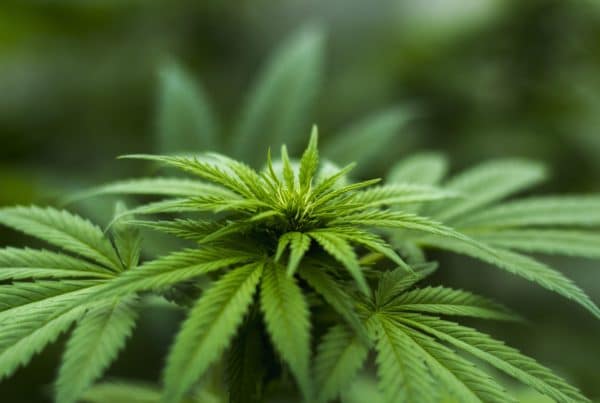
When 28 states legalized medical marijuana, cannabis activists rejoiced. The public was finally listening to what they’d been saying all along: marijuana can be good for you.
Now more and more people are researching the links between marijuana and health. Two of the chemicals in weed that are in the most press are cannabidiol (CBD) and tetrahydrocannabinol (THC). Scientists link these chemicals to pain relief and cell protection.
But there is still a huge stigma against marijuana. Even though scientists already isolated the chemical that makes weed trippy, we still think of marijuana as a harmful drug.
This public perception hurts voters when it comes to debates about marijuana. Michigan has already legalized medical marijuana. But the debates about its use for recreation are still in full swing.
It’s time to combat all the negative press. Make a balanced decision and keep reading about the positive effects of marijuana.
1. Weed Helps Users with Chronic Pain
Chronic pain is the most common use for medical marijuana. That’s because chronic pain is also one of the key causes of medical disability.
Researchers from the National Academics of Sciences, Engineering, and Medicine have done extensive studies on medical marijuana. They’ve found that products containing CBD are super effective at treating chronic pain.
Medical professionals don’t recommend lighting up at work. But the positive effects of marijuana on chronic pain can help tons of people return to work.
2. Cannabis Health Benefits Include Reduced Muscle Spasms
If you’re someone afraid of having hiccups for the rest of your life, don’t worry. Marijuana has a cure for that.
The same report from the NASEM links marijuana with reduced muscle spasms. People who suffer from restless leg syndrome can use cannabis to calm themselves. It’s even been associated with fighting symptoms of Multiple Sclerosis.
Those who deal with diaphragm spasms that cause uncontrollable hiccups use medical marijuana. So instead of getting your roommate to scare you, light up a joint.
3. Marijuana Helps with Depression
There still isn’t a cure-all for depression. But scientists are optimistic about the use of marijuana.
Their studies have found a 5 percent decrease in the total suicide rate. There’s also an 11 percent decrease in suicide rates of users in their 20s.
But these people aren’t smoking away their problems. These studies involve people who are casual marijuana users. Like any anti-depressant, marijuana users can form a dependency on the drug. The best results occur if combined with a healthy lifestyle and regular therapy.
4. Weed Fights Cancer
You read that right. One positive effect of marijuana is that fights cancer.
The research is still developing on this one, but scientists are hopeful. They’ve found that some cannabis compounds have been able to halt the growth of tumor cells.
Most of the tests done to link cannabis with killing cancer are still in the animal testing phase. But there are results that show it’s positive effects on patients undergoing chemo.
5. Marijuana Helps with Nausea
One of the side effects of chemo treatment is nausea. While there are many treatments for this, more doctors are prescribing medical marijuana.
That’s because the chemical compounds in weed react with the parts of the brain that cause nausea. It’s also useful for people who get car sick.
6. Cannabis Uses Include PTSD Treatment
Using marijuana as a treatment is popular with people who suffer from PTSD.
For the same reasons that marijuana helps with depression, cannabis helps with PTSD. The chemical THC has been linked to reducing traumatic memories that could trigger a PTSD attack.
In fact, patients who smoked weed saw a decrease in their PTSD symptoms of about 75 percent.
7. Weed Treats Anxiety
Anxiety is another growing problem in the United States. That’s why more people are turning to cannabis to regulate their anxiety.
The CBD chemical in weed can have a calming effect on people with anxiety. This can make it easier for people with chronic anxiety to function in their daily routines.
We will point out that some users found that cannabis makes their anxiety worse. If you’re seeking treatment for your anxiety, talk to your doctor and the medical professionals at the dispensary. They’ll be able to give you solid guidance.
8. Weed Helps with Eating Disorders
We’ve all heard about the “munchies.” It’s a common stereotype associated with marijuana users.
But some patients are using it to regulate their eating times. It’s a useful tool for anorexia and bulimia recovery. Patients who struggle with eating disorders have a defective neurotransmitter in their brain. This makes it impossible for them to enjoy any food.
Scientists have discovered that smoking marijuana helped repair this part of their brains. They’ve found that it helps them to enjoy eating again.
9. Topical Marijuana Can Help Your Skin
Smoking is bad for your skin, no matter what. But studies show that topical marijuana treatments are helpful for eczema patients.
Instead of ingesting marijuana, see what kinds of creams you can get for your skin.
10. Marijuana Protects Brain Cells
At the heart of most of this research is the discovery that marijuana protects brain cells.
The THC in marijuana protects brain neurons from trauma. This trauma can show up as depression, anxiety, and other health-related issues.
CB2, another chemical in marijuana, is an anti-inflammatory. This is useful for people who have chronic pain, and it also promotes brain health in the long run.
Want to Know More about the Positive Effects of Marijuana?
If you’ve read this article and you’re curious about the other positive effects of marijuana, then check out our blog. We’re here to help you understand medical marijuana. That way you can make the best decisions about your healthcare.
You can also contact us if you have any questions. We’re more than happy to help.








One Comment